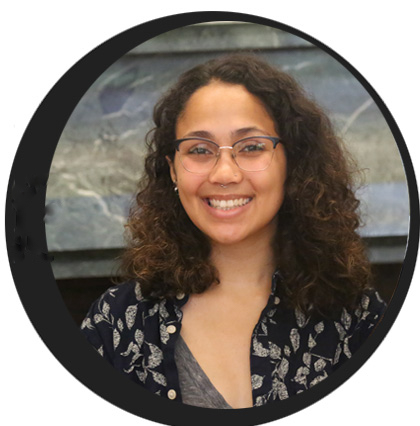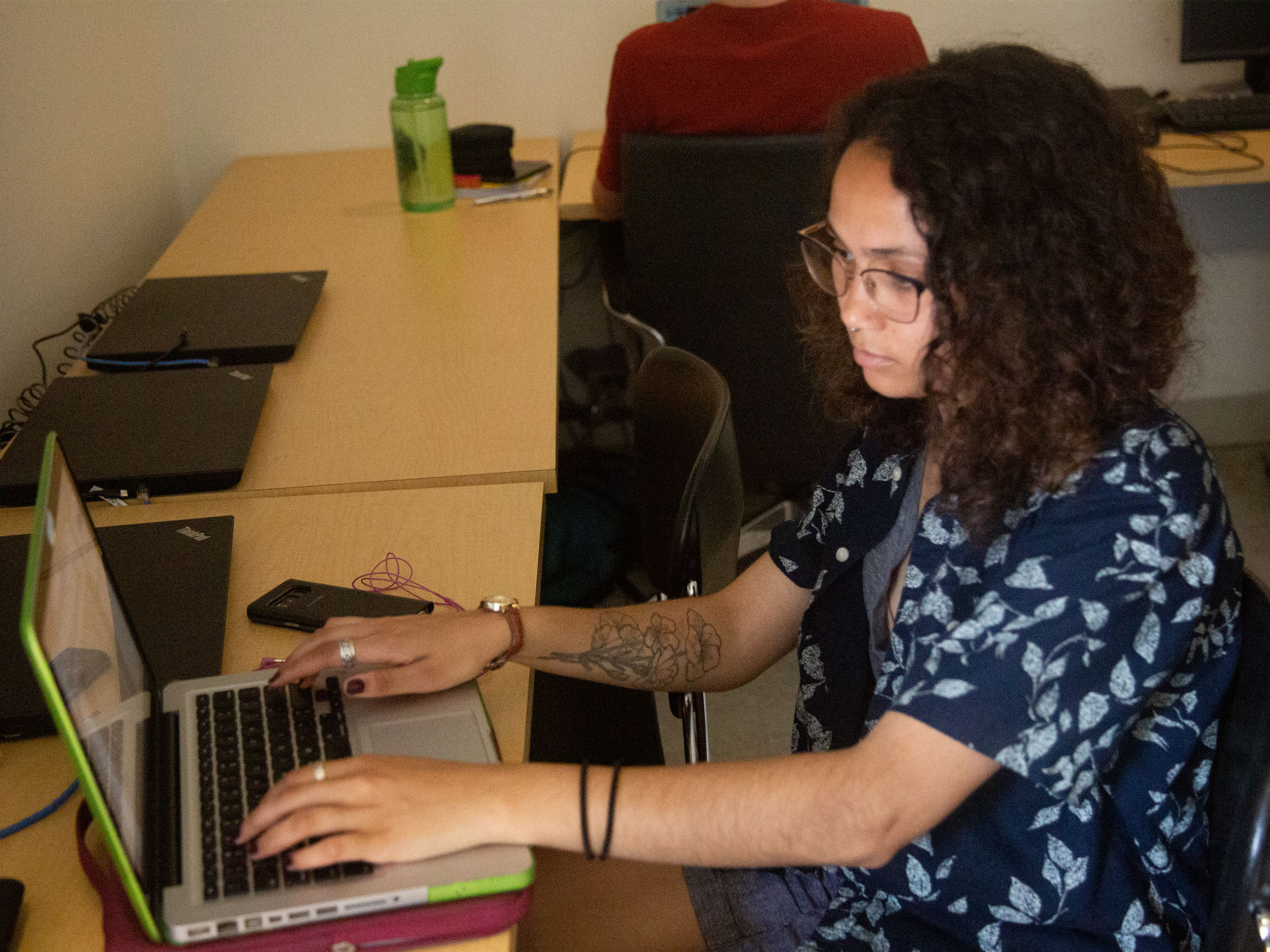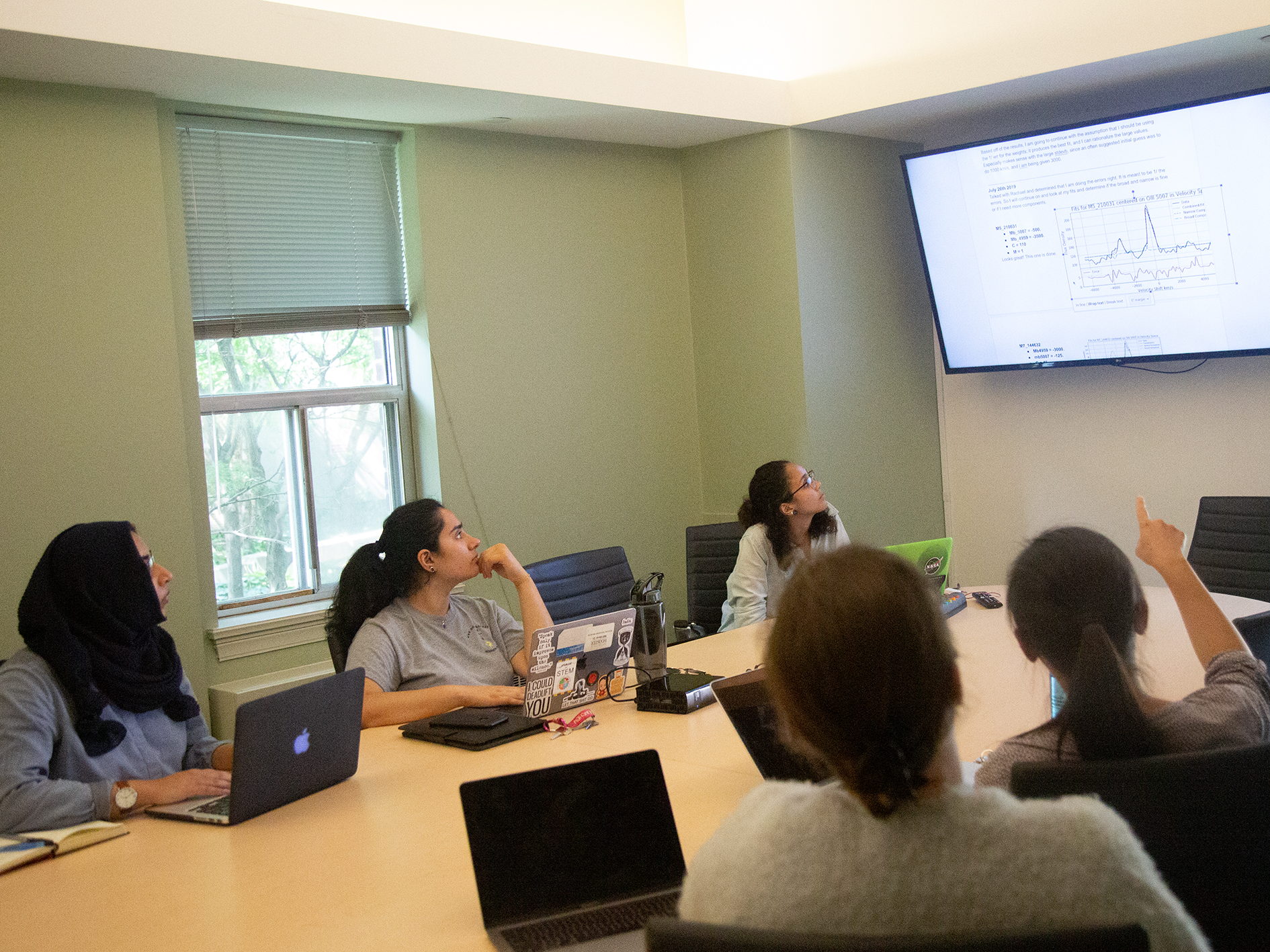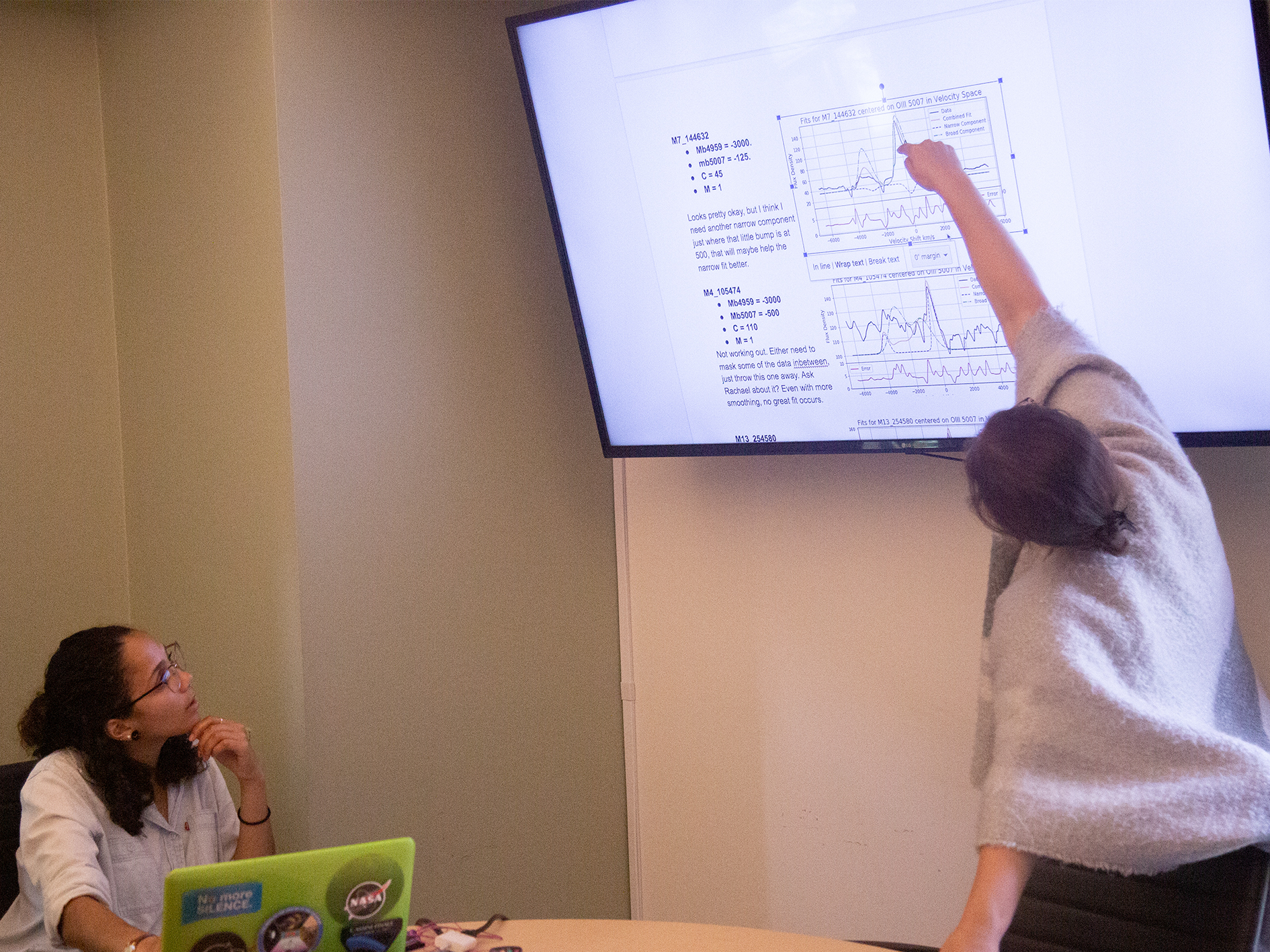
SURP SOW – Marley Leacock

2019 Summer Undergraduate Research Program
Student of the Week
Name: Marley Leacock
Hometown: Calgary, Alberta
Program: Going into 4th year of her BSc, with a Major in Astronomy, at the University of British Columbia
How did you become interested in Astronomy and Astrophysics?
When I was little, I had those little kid interests, like space and dinosaurs, so I had the solar system over my bed, and things like that. Then, in my final year of high school, the European Space Agency landed on Comet 67P – and so [my interest] just kind of snowballed after that. I had so many questions, like, how did they know how to get to the comet? Or, how did they build something to even land on it?
And then later on, I got really lucky. I got to go to the Jet Propulsion Laboratory in Pasadena, California, run by NASA. I got to see mission control, and the room where the team was when Curiosity landed. That’s when I knew I had to be involved somehow.
Can you tell us about your research project?
I’m looking at Active Galactic Nuclei. I look at the spectra of the galaxies in the COSMOS field in the optical wavelength range. So, what I’m looking at is the doubly ionized oxygen peaks and singly ionized oxygen, and try to determine if any of them have AGN characteristics in their spectra. So, a really large doubly ionized oxygen line, would be at possible AGN, because it takes a lot of energy to ionize oxygen that much – and so it probably comes from X-ray activity going on in the nucleus of the AGN galaxy. I’m also looking to identify any outflows, in the galaxies, and that would be seen by really broad emission lines, coupled with the big oxygen 3 peak, just to catalogue what’s in the COSMOS field in this particular area.
Can you describe your typical day?
I’m using the LEGA-C catalogue – they have all the wavelengths and the whole spectra of the galaxies in there – and then I do a bunch of analysis, like looking at the ratio between lines. Then I plot the spectra, and try to get a Gaussian fit to the spectral peaks, to try to find the standard deviation of the peaks, and chart them and see if that’s consistent with a velocity that would indicate a gas outflow from the centre of the galaxy.
What is it like to work with your team?
I discuss the research a lot with the two other students on my team. We’re all studying a similar thing, just looking at it differently, and so it’s been very helpful to share different papers, and ask each other questions. We all share knowledge together. We also have a weekly meeting where we can share and help each other out.
Tell us about your future plans.
The idea of grad school is interesting. After talking to my supervisors, I definitely have a better idea of what graduate school would be all about. At UBC, I also do a lot of outreach with the department – like Girl Guide visits, and things like that. At this point, it’s kind of a toss-up between going to grad school, and teaching. I’m glad that I did SURP, because I think that now I can make a better decision about that.
Is there anything else you’d like to add?
One of the things about SURP for me, is that I’ve never worked with so many women. My whole team at SURP is actually women. I’ve never had that before, and I think that’s one of my favourite things about being here.



2019 SURP Student of the Week Archive
Baria Khan
Jason (Jaemyoung) Lee
Clara Chung
Kelly Werker Smith


